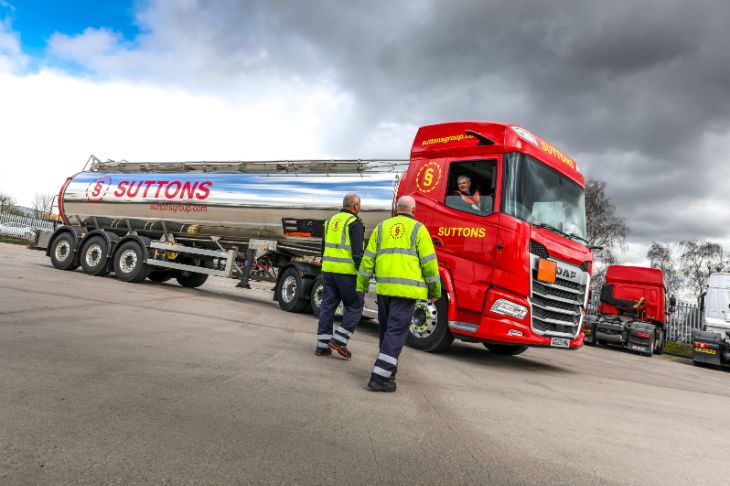Dangerous goods are transported all over the world.
They are a necessity to how some businesses operate and they have huge impacts on local and global economies.
Using special equipment and uniquely designed transport, these dangerous goods can be transported with ease and minimal risk.
As well as having the right technology it’s vital that the correct paperwork and documentation is provided with each delivery of dangerous goods.
To help with this documentation, UN numbers are used.
In this blog, we will look at what UN numbers are and why they play an important role in the transportation of dangerous goods.
We deal with road tanker and tank container logistics so we have vast experience when it comes to UN numbers.
What is a UN Number?

The UN number is a unique identifier assigned to substances or materials that pose a risk to the public during transportation.
The UN number list can vary from UN0001 to about UN3500.
The numbers were established by the United Nations Committee of Experts on the Transport of Dangerous Goods.
These codes help standardise and streamline the classification, labelling, and documentation of hazardous materials on a global scale.
Each UN number corresponds to a specific substance or group of similar substances with similar properties, facilitating accurate and consistent communication about the potential dangers associated with these materials.
The UN number is a crucial component of the international regulatory framework for the safe transport of dangerous goods.
They ensure that relevant information is readily available to emergency responders, shippers, and regulatory authorities when they need it.
Different Classifications of UN Numbers
UN numbers are classified into different hazard classes based on the type of danger posed by the materials they represent.
These UN numbers can be seen on Hazmat placards that will be attached to a tanker that is transporting dangerous goods.
Hazmat warning placards are categorised into nine distinct classifications, each with its own subdivisions.
The class number of each placard is located at the bottom, while the division number is positioned in the middle.
This system ensures clear and efficient identification of the type and level of hazard associated with the transported materials. These classes are as follows:
- Class 1: Explosives
- 1.1: Products with the potential to create a mass explosion.
- 1.2: Products with the potential to create a projectile hazard.
- 1.3: Products with the potential to create a fire or minor blast.
- 1.4: Products with no significant risk of creating a blast.
- 1.5: Products considered very insensitive that are used as blasting agents.
- 1.6: Products considered extremely insensitive with no risk to create a mass explosion.
- Class 2: Gases
- 2.1: Flammable gases.
- 2.2: Non-flammable gases.
- 2.3: Toxic gases.
- Class 3: Flammable Liquids
- Class 4: Flammable Solids
- 4.1: Flammable solids.
- 4.2: Spontaneously combustible.
- 4.3: Dangerous when wet.
- Class 5: Oxidising Substances and Organic Peroxides
- 5.1: Oxidising substances.
- 5.2: Organic peroxides.
- Class 6: Toxic and Infectious Substances
- 6.1: Toxic substances.
- 6.2: Infectious substances.
- Class 7: Radioactive Material
- Class 8: Corrosive Substances
- Class 9: Miscellaneous Dangerous Substances and Articles
The classification system is an essential component of international efforts to manage and mitigate the risks associated with the transportation of dangerous goods.
Are UN Numbers Universal?

UN numbers were designed to be universally understood so that dangerous goods being transported all over the world can be identified and managed more easily.
Hazardous goods can cause serious damage to people and the environment so it’s paramount that they can be identified and dealt with appropriately.
With a universally understood identifying system such as UN numbers this is possible.
What is the Difference Between UN and NA Numbers?
The terms UN and NA numbers are related to the identification of hazardous materials, but they serve different purposes.
UN stands for United Nations and NA stands for North America.
UN numbers are considered recognised identifiers across the world, whereas NA numbers are only usually seen in North America (USA and Canada)
While UN numbers will be assigned and issued by the United Nations, NA numbers will be assigned by the relevant governing bodies of these countries, these include:
- US Department of Transportation (DoT).
- Transport Canada.
Dangerous Goods & UN Numbers at Suttons Tankers
UN numbers are a vital cog in the process of transporting dangerous goods across the globe.
Their importance is evident as they are used universally and many countries will rely on them when it comes to shipping and receiving hazardous materials.
At Suttons Tankers we have a vast fleet of tankers that are equipped with the latest technology to handle a wide range of dangerous materials.
We also handle other products such as gas, waste, fuels and powders which further highlights our fleet and staff capabilities.
Please contact us if you need the services of road tanker logistics for your business.